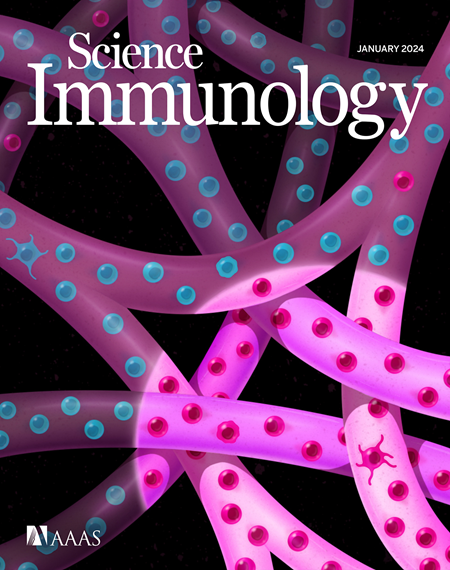Single-cell topographical profiling of the immune synapse reveals a biomechanical signature of cytotoxicity
IF 17.6
1区 医学
Q1 IMMUNOLOGY
引用次数: 0
Abstract
Immune cells have intensely physical lifestyles characterized by structural plasticity and force exertion. To investigate whether specific immune functions require stereotyped mechanical outputs, we used super-resolution traction force microscopy to compare the immune synapses formed by cytotoxic T cells with contacts formed by other T cell subsets and by macrophages. T cell synapses were globally compressive, which was fundamentally different from the pulling and pinching associated with macrophage phagocytosis. Spectral decomposition of force exertion patterns from each cell type linked cytotoxicity to compressive strength, local protrusiveness, and the induction of complex, asymmetric topography. These features were validated as cytotoxic drivers by genetic disruption of cytoskeletal regulators, live imaging of synaptic secretion, and in silico analysis of interfacial distortion. Synapse architecture and force exertion were sensitive to target stiffness and size, suggesting that the mechanical potentiation of killing is biophysically adaptive. We conclude that cellular cytotoxicity and, by implication, other effector responses are supported by specialized patterns of efferent force.
免疫突触的单细胞地形剖析揭示了细胞毒性的生物力学特征
免疫细胞具有强烈的物理生活方式,其特点是结构可塑性和用力。为了研究特定的免疫功能是否需要定型的机械输出,我们使用超分辨率牵引力显微镜比较了细胞毒性T细胞形成的免疫突触与其他T细胞亚群和巨噬细胞形成的接触。T 细胞的突触是全局性的压迫,这与巨噬细胞吞噬时的拉扯和捏合有着本质区别。对每种细胞施力模式的频谱分解将细胞毒性与压迫强度、局部突起以及复杂的不对称地形诱导联系起来。通过对细胞骨架调节因子的基因干扰、突触分泌的实时成像以及界面变形的硅学分析,这些特征被验证为细胞毒性驱动因素。突触结构和作用力对目标的硬度和大小很敏感,这表明杀伤的机械增效具有生物物理适应性。我们的结论是,细胞毒性以及其他效应器反应是由专门的传出力模式支持的。
本文章由计算机程序翻译,如有差异,请以英文原文为准。
求助全文
约1分钟内获得全文
求助全文
来源期刊

Science Immunology
Immunology and Microbiology-Immunology
CiteScore
32.90
自引率
2.00%
发文量
183
期刊介绍:
Science Immunology is a peer-reviewed journal that publishes original research articles in the field of immunology. The journal encourages the submission of research findings from all areas of immunology, including studies on innate and adaptive immunity, immune cell development and differentiation, immunogenomics, systems immunology, structural immunology, antigen presentation, immunometabolism, and mucosal immunology. Additionally, the journal covers research on immune contributions to health and disease, such as host defense, inflammation, cancer immunology, autoimmunity, allergy, transplantation, and immunodeficiency. Science Immunology maintains the same high-quality standard as other journals in the Science family and aims to facilitate understanding of the immune system by showcasing innovative advances in immunology research from all organisms and model systems, including humans.
 求助内容:
求助内容: 应助结果提醒方式:
应助结果提醒方式:


